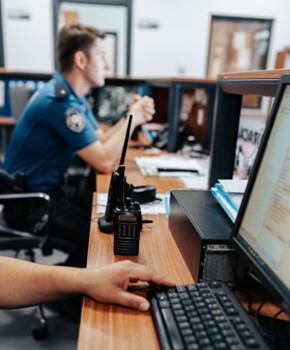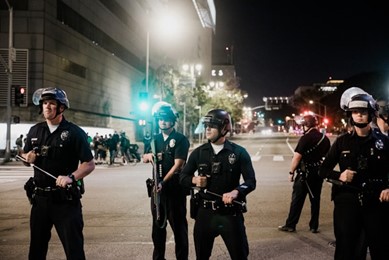
In recent years, the need for effective conflict resolution strategies in policing has become increasingly apparent. High-profile incidents involving excessive use of force have spurred public demand for police reform and greater accountability. James Vafeades of Long Island says that one key aspect of this reform is the implementation of de-escalation techniques, which are designed to resolve conflicts peacefully and reduce the likelihood of violence.
Understanding De-escalation
De-escalation refers to a set of strategies and techniques used by law enforcement officers to defuse potentially volatile situations and reduce the likelihood of physical confrontation. The primary goal is to ensure the safety of both the officers and the individuals involved. De-escalation techniques emphasize communication, empathy, and patience, allowing officers to manage situations without resorting to force.
Key Principles of These Techniques
Communication: Effective verbal and non-verbal communication is crucial in de-escalation. Officers are trained to use calm, clear, and respectful language to engage with individuals. Active listening is also important, as it helps officers understand the perspective and concerns of the person they are interacting with.
Empathy: Demonstrating empathy involves recognizing and validating the emotions and experiences of others. By showing understanding and compassion, officers can build rapport and trust, which can help to defuse tension.
Patience: De-escalation often requires time. Officers are trained to remain patient and give individuals the opportunity to calm down and express themselves. Rushing a situation can exacerbate tensions and lead to unnecessary confrontations.
Non-threatening Body Language: Body language plays a significant role in how messages are received. Officers are trained to adopt non-threatening postures, avoid aggressive gestures, and maintain an appropriate distance to make individuals feel safe and respected.
Specific De-escalation Techniques
Tactical Pause: This involves taking a moment to assess the situation before acting. A brief pause can give officers time to gather information, consider options, and avoid reactive responses that could escalate the situation.
Use of Time and Distance: Creating physical distance between the officer and the individual can help to reduce the immediate threat and provide a buffer that allows for calmer communication. This also provides officers with more time to think and plan their next steps.
Active Listening: Officers are trained to listen attentively and acknowledge the concerns of individuals. Techniques include nodding, maintaining eye contact, and repeating back what the person has said to show understanding.
Establishing Rapport: Building a connection with the individual can help to reduce hostility. Officers can find common ground, use the person’s name, and engage in small talk to build trust.
Providing Choices and Setting Limits: Offering choices can give individuals a sense of control over the situation, which can reduce resistance. Clearly explaining the consequences of different actions can help individuals make more informed decisions.
Deflection and Redirection: Changing the subject or redirecting the individual’s attention to a less contentious topic can help to de-escalate emotions and shift the focus away from confrontation.

Benefits of Utilizing These Techniques in Law Enforcement
Reduced Use of Force: Effective de-escalation techniques can significantly reduce the need for physical intervention, leading to fewer injuries for both officers and civilians.
Improved Community Relations: By handling conflicts peacefully, law enforcement can build trust and improve relationships with the communities they serve. This fosters cooperation and reduces animosity.
Enhanced Officer Safety: De-escalation reduces the likelihood of violent encounters, enhancing the safety of officers. It also promotes a less stressful work environment, contributing to better mental health and job satisfaction.
Legal and Ethical Compliance: Utilizing de-escalation techniques aligns with the ethical standards of policing and can help departments comply with legal requirements regarding the use of force.
Challenges and Training
Despite the clear benefits, implementing de-escalation techniques poses challenges. Officers often operate in high-stress environments where quick decisions are necessary. Comprehensive and ongoing training is essential to ensure that officers can effectively apply de-escalation strategies. Training programs typically include:
Scenario-Based Training: Officers participate in realistic simulations that mimic potential encounters, allowing them to practice and refine their skills in a controlled environment.
Role-Playing Exercises: These exercises enable officers to experience both the law enforcement and civilian perspectives, fostering empathy and improving their ability to de-escalate conflicts.
Psychological Training: Understanding human behavior and psychology can help officers recognize signs of distress and choose appropriate de-escalation techniques.
Cultural Competency: Training in cultural awareness and sensitivity helps officers to better understand and respect the diverse communities they serve, reducing misunderstandings and fostering cooperation.
Conclusion
De-escalation techniques are essential tools in modern policing, offering a pathway to resolving conflicts peacefully and enhancing the safety and trust between law enforcement and communities. Through effective communication, empathy, and patience, officers can manage potentially volatile situations with minimal use of force. Continued investment in comprehensive training and a commitment to ethical policing practices are crucial for the successful implementation of these strategies, ultimately leading to a more just and harmonious society.